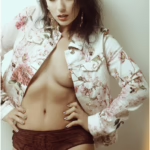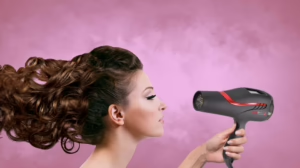The Art of Hairstyling: Techniques Every Man Should Know
Introduction
In an era where personal grooming is more than just a routine, hairstyling has emerged as an essential skill for men. The ability to craft a good hairstyle can significantly impact one’s appearance and confidence. As trends evolve and personal styles develop, understanding the art of hairstyling becomes increasingly valuable. This article explores various hairstyling techniques that every man should know, ranging from basic grooming practices to advanced styling methods.
The Importance of a Good Hairstyle
A well-executed hairstyle can enhance a man’s features, convey professionalism, and even attract social connections. The right haircut and style can complement facial structures and reflect personality traits. Investing time in hairstyling can lead to improved self-esteem and a polished appearance.
Understanding Hair Types
Before diving into styling techniques, it’s crucial to understand the different hair types. Hair can be categorized into four main types, and knowing your hair type will significantly influence your styling choices.
1. Straight Hair
Straight hair is smooth and sleek, often reflecting light beautifully. Men with straight hair have the advantage of easier styling but may require products to prevent flatness.
2. Wavy Hair
Wavy hair features a natural texture that can be both versatile and stylish. It provides the opportunity for various styles, ranging from casual to formal.
3. Curly Hair
Curly hair possesses a natural bounce and volume. While it’s stylish, it can also be challenging to control, requiring specific techniques and products.
4. Coily Hair
Coily hair is tightly curled and often requires more moisture and care. Styling coily hair involves techniques that enhance its natural texture without causing damage.
Understanding your hair type allows you to select the appropriate products and styling methods, creating a more tailored grooming routine.
Essential Hairstyling Techniques
1. The Right Haircut
The foundation of great hairstyling begins with a good haircut. Consulting a skilled barber or stylist is crucial. Consider the following when choosing a haircut:
- Face Shape: Different face shapes require different cuts. For instance, oval faces often suit various styles, while square faces might benefit from softer edges.
- Hair Density: Thicker hair might require thinning to create volume, while thin hair may need layering for added texture.
2. Blow-Drying Techniques
Blow-drying is a foundational technique in hairstyling that can create volume and shape.
- Preparation: Start with towel-dried hair. Applying a heat protectant is essential to prevent damage.
- Directional Drying: Use a round brush to lift roots and shape ends while directing the airflow downwards to avoid frizz.
- Cool Setting: After drying, a quick cool shot can set the style in place.
3. Using Styling Products
Choosing the right products is essential for maintaining a hairstyle. Here are some common products and their uses:
- Pomade: Offers a shiny finish and is excellent for slick styles.
- Wax: Provides strong hold and is perfect for textured looks.
- Gel: Delivers a firm hold but can appear wet, making it suitable for specific styles.
- Clay: Ideal for a matte finish and control, perfect for textured hairstyles.
- Mousse: Adds volume and structure, particularly useful for wavy or curly hair.
4. Mastering Texturizing Techniques
Texturizing is crucial for creating depth and dimension in your hairstyle. Here are some effective techniques:
- Point Cutting: This method involves cutting the tips of the hair at an angle to create a softer edge.
- Thinning Shears: Using thinning shears can remove bulk and create a more textured look.
- Razor Cutting: A razor can add softness and movement to the hair, making it look more natural.
5. Styling for Different Occasions
Different events call for different hairstyles. Here are a few popular styles:
- Casual Look: For a relaxed appearance, consider a tousled or messy style using a texturizing spray or mousse.
- Professional Look: A slicked-back style or a classic side part can convey professionalism.
- Formal Events: A polished, clean look is often best for formal occasions. Opt for a neat hairstyle with minimal product for a refined appearance.
6. Maintaining Healthy Hair
Healthy hair is essential for any style. Here are tips to maintain hair health:
- Regular Trims: Trimming every 6-8 weeks helps remove split ends and maintain shape.
- Washing and Conditioning: Use quality shampoos and conditioners suitable for your hair type. Avoid over-washing, which can strip natural oils.
- Nourishing Treatments: Consider using oils or deep conditioning treatments to maintain moisture levels.
7. The Power of Accessories
Hair accessories can elevate a hairstyle and provide a personal touch. Some popular options include:
- Headbands: Useful for keeping hair in place during workouts or casual outings.
- Clips and Pins: Great for securing longer hairstyles or adding style to a look.
- Hats: A stylish hat can complement an outfit while providing protection from the sun.
8. Staying Updated With Trends
Hairstyles are constantly evolving, and staying updated with trends can inspire new looks. Consider following barber shops, stylists, and fashion influencers on social media to gather ideas.
Advanced Techniques for the Groomed Gentleman
For those looking to elevate their grooming game, advanced techniques can help in achieving professional-quality results.
1. Fade and Taper Techniques
Fades and tapers are popular cutting techniques used to create clean transitions from short to long hair.
- Low Fade: Begins just above the ears and gradually increases in length.
- Mid Fade: Starts at the temples, offering a balanced look.
- High Fade: Begins high on the head, often used for more dramatic styles.
2. Undercut Styles
An undercut features one section of the hair cut significantly shorter than the rest, creating a striking contrast. This style is versatile, allowing for various hairstyles on top, from slicked-back to curly.
3. The Blowout Technique
A blowout involves styling the hair using a round brush and a blow dryer, creating volume and smoothness.
- Volume: Focus on lifting the roots while maintaining the length.
- Shape: Creating a slight bounce at the ends can enhance the overall look.
4. Barbering Skills
Learning basic barbering skills can enhance personal styling techniques. Skills include:
- Clipper Cutting: Mastering clippers can provide precision and a clean finish.
- Scissor Over Comb Technique: This technique offers great control and is ideal for blending.
Conclusion: The Journey of Personal Style
The art of hairstyling is an evolving journey for every man. Understanding foundational techniques, exploring personal preferences, and staying in tune with evolving trends will lead to the development of a unique and refined personal style. The confidence gained from mastering hairstyling can significantly impact self-image and, by extension, social interactions and professional opportunities.
Embrace the art of hairstyling not just as a routine but as an expression of oneself. With practice, experimentation, and dedication, any man can become proficient in the skills necessary to achieve a stylish and polished look.
References
- [1] “Men’s Hair Products Explained: Pomade, Wax, Clay, Gel & More” – Men’s Health Magazine.
- [2] “Choosing the Right Haircut for Your Face Shape” – GQ Magazine.
- [3] “The Complete Guide to Blow-Drying Hair” – Vogue.
- [4] “Advanced Hair Cutting Techniques” – American Hairstylist Association.
- [5] “Trends in Men’s Hairstyling: What to Look for in 2023” – Esquire Magazine.


























Add Comment